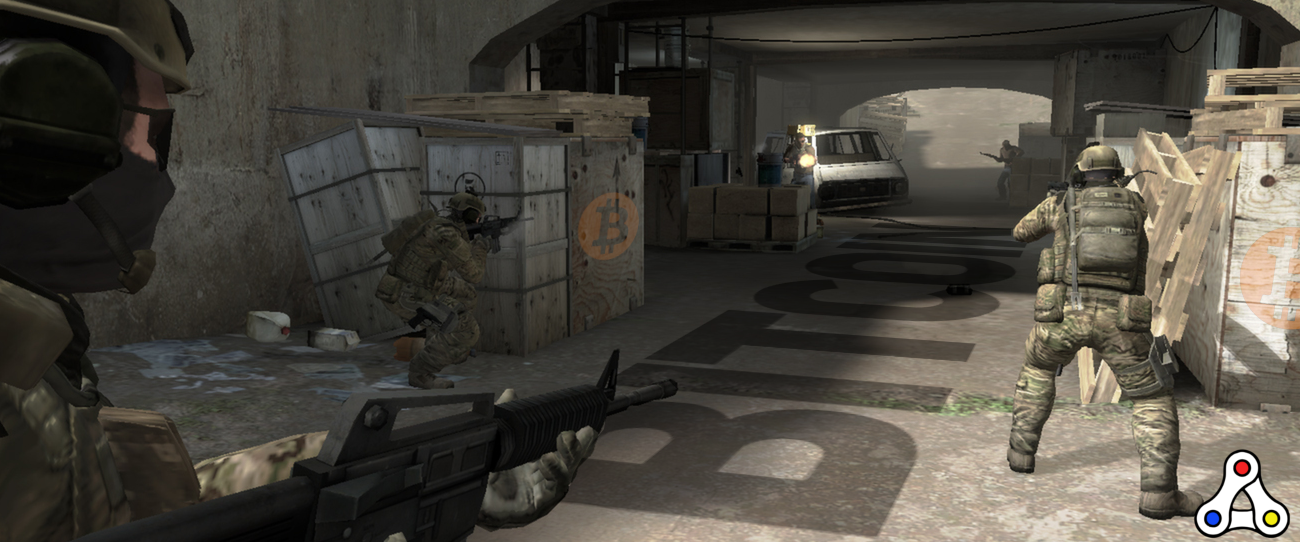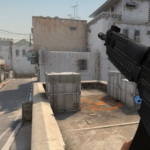Bitcoin development studio Zebedee has launched Infuse, a tool to add bitcoin payments to the free pc game Counter-Strike Global Offensive. Infuse is a separate piece of software that players need to connect to their Steam account. Zebedee and Mintgox showcased their bitcoin payment solution during a Twitch stream.
They created Infuse on top of the Bitcoin Lightning Network. Every Counter-Strike player who joins an Infuse server, needs to pay an entrance fee using their Bitcoin Lightning wallet. By scanning a QR code they can deposit sats, and if gamers perform well enough they will take home a profit.
Zebedee co-founder Christian Moss explained during the live stream why they created Infuse. “One of the difficult things is actually making a game people want to play”, so he argued it’s better to enhance games that are already popular. Counter-Strike GO is played by one million gamers per day, making the game perfect for bitcoin integration. “Even converting only one percent into bitcoin users would be a major win”, Moss argued.
Currently Infuse simply pays out based on the amount of kills a player has in a game of Counter-Strike. However, the development studio is already adding more features: allowing team-based gameplay to play a role, for example. In addition the studio already has plans to add more games, but they didn’t provide any details on which ones. Infuse should launch to the public in Q1 2021.
What is the Lightning Network?
The Lightning Network is a second layer on top of the Bitcoin blockchain. In this case we are talking about the Bitcoin network, but technically the Lightning Network can run on top of any blockchain. It’s a payment protocol for fast transactions between participating nodes. Many developer believe the Lightning Network to be a solution for the scaling problems that Bitcoin is facing.
What the Lightning Network does, is creating a temporarily communication channel between two parties. Here these two parties can make as many transactions as they want. Only after closing the channel, the nodes can communicate the outcome of these transactions to the Bitcoin network. As a result a transaction on the Lightning Network only needs to cost a fraction of a cent.
For those who are not familiar with bitcoin. You can divide a bitcoin into smaller units, and the smallest possible amount is called satoshi, or sat. On the Lightning Network, a second layer solution on top of the Bitcoin blockchain, these sets can even be divided into millisats. Anyway, one satoshi equals 0.00000001 BTC.
Lightning Network and gaming
Several other developers are using the Lightning Network to add bitcoin payments to video games. For example, Satoshi’s Games has created the battle royale shooter Lightnite. This game even uses the Liquid Network to embrace the concept of non-fungible tokens. However, Lightnite isn’t a household name in the gaming landscape. It needs to battle with thousands of yearly released games for the limit time a consumer spends per day on video games.
In February Zebedee already released toolkits for developers. These would allow game developers to implement Bitcoin Lightning Network payments and monetize gameplay within their video games. The SDK allows developers to for example monetize points collected in games. This means that value and rewards will be digital, programmable, and they will have universal value.
Mandelduck Studios was one of the first game studios using the Zebedee SDK. Raiki is a fighting game in which two players commit some bitcoin and the winner takes it all. The game also has a way to make viewers interact with the game, as they can spend fractions of bitcoin to add challenges or aesthetics. Mandelduck Studios showed the game in February during the Advancing Bitcoin Conference in London.





